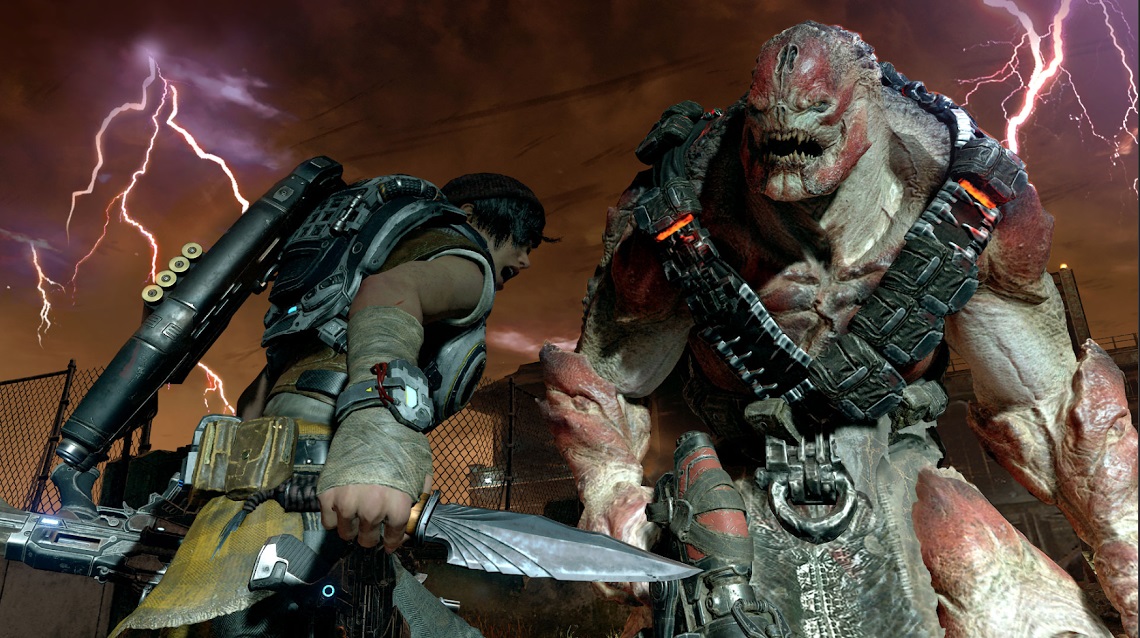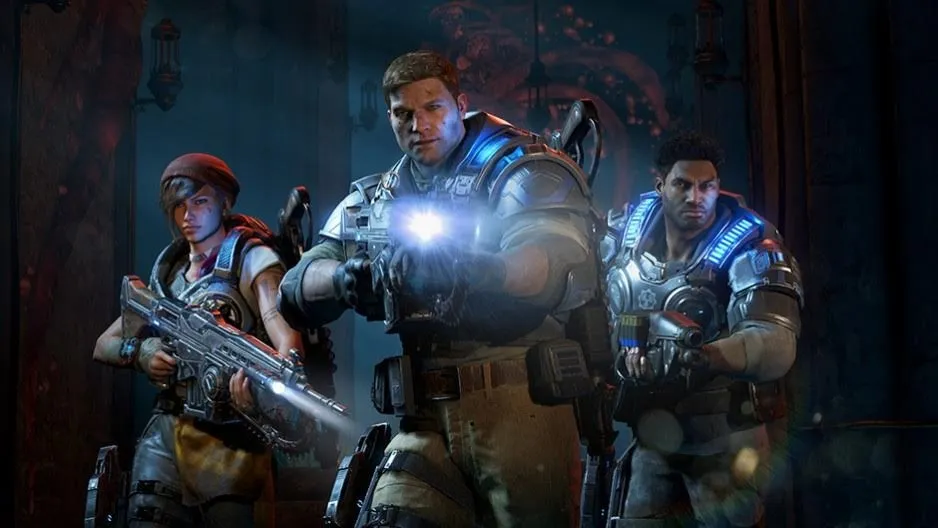Editor’s note: This video review originally appeared on Feminist Frequency and is cross-posted here with permission.
It’s been ten years since Marcus, Dom, and the other members of Delta Squad first shot and chainsawed their way across the planet Sera in a desperate attempt to defeat the Locust, and in some ways, both those characters and the gameplay we so strongly associate with them now feel like relics from another era. Gears of War 4 seems to recognize this, reinvigorating the series’ signature combat without reinventing it, and shifting the narrative focus from Marcus and his buddies to a younger generation who have grown up without the threat of the Locust looming over them. Unfortunately, Gears of War 4 still plays it safe, teasing us with the potential for a story that could have taken the franchise in a fascinating new direction, before settling in to yet another simple and straightforward fight against the Locust. The result is a solid, competent shooter, a decent game that could have been much better.
Gears 4 gets off to a promising start, suggesting that the COG, the Coalition of Ordered Governments that fought so valiantly for humanity in the original games, has become an oppressive, authoritarian force in a post-Locust world. The press conference that begins the game shows us how the government-controlled media glorifies the COG and its de-facto leader, First Minister Jinn, presenting her as a noble figure with humanity’s best interests at heart. The reality of Jinn’s politics turn out to be more complicated, however, as people are required by law to live in fabricated cities, and women are required to participate in post-war repopulation efforts. Kait, the squad’s one female member, understandably takes issue with this, and I hoped the game might explore this idea some more, but it’s quickly dropped and never mentioned again.
The gameplay also starts off strong, before becoming more conventional and expected. As “outsiders,” humans who have chosen to defy the government and live in their own settlements, the protagonists face off against the COG’s robot army in the early sections of the game. During these encounters, the combat feels simultaneously swift and hefty. Spherical enemies called trackers can be kicked away like soccer balls, lending the combat a playful physicality, and the spectacle of robots being dropped into the environment by massive planes flying overhead makes these battles feel dramatic and desperate. It’s also during these first few acts that we see far more of Sera’s natural beauty than we ever have before.
But soon the game retreats into more standard and familiar territory. All the interesting early concerns about how the COG is misusing its military and industrial power go out the window when the game once again pits you against the Locust in the sorts of grimy industrial environments that were so common in the original Gears games. The Locust continue to be an enemy with all the nuance of J.R.R. Tolkien’s orcs; they’re seemingly an inherently hostile, aggressive species that we can feel justified in slaughtering without any moral qualms whatsoever.

Still, the interpersonal dynamics within your squad set Gears 4 apart a bit from its predecessors. The central character, Marcus Fenix’s son JD, isn’t terribly interesting. He’s the sort of blandly likable protagonist who might have been played by Chris Pratt if this had been a movie. And not the funny, quirky Chris Pratt; more like the Jurassic World Chris Pratt. But what is interesting is the difference between Marcus and the younger members of the squad. Marcus is as gruff, grizzled and crusty as ever, but JD, Kait and Del bring a different kind of energy to Gears. They’re a bit more lighthearted than the men of Delta Squad were, joking and making wisecracks, suggesting that they’ve grown up in a more peaceful time than the previous generation did. Unfortunately, Del, the squad’s one black member, doesn’t get to do much of anything but joke and make wisecracks. JD, Marcus, and Kait all have the suggestion of lives that extend beyond the battlefield, but Del’s character arc begins and ends with being JD’s warm, wisecracking buddy. Meanwhile Oscar, Kait’s uncle, is presented as reckless and drunk, teetering over into being a racial stereotype.
It’s also frustrating that the game employs a standard damsel-in-distress device, with Kait’s mother Reina, who is introduced as a strong leader, being reduced to a plot mechanism when she’s taken by the Locust early on. Sure, Marcus is also captured for a brief period of time, but it’s not the same sort of overarching plot motivator that Reina’s capture is. On the other hand, Kait is presented as a capable and competent member of the team, with Marcus and everyone else treating her with respect and a sense of solidarity. Of course, not treating a female character terribly is hardly something we should celebrate; it’s simply something we should expect.

And ultimately, Gears of War 4 is all about giving us exactly what we expect; nothing less and nothing more. It’s a solidly built machine that, ten years after the release of the original game, wants to convince us that this franchise can still be relevant. But if it’s going to be relevant, it needs to take some chances. Gears 4 starts off suggesting that it might take us to new places but then shies away from that, and in the end, it’s yet another cover shooter that centers the experiences of its white male characters and has us fighting the same straightforward battles we’ve fought before. It could have been fun and surprising and special, but in the end, it’s content to just be fun and familiar and predictable.
Carolyn Petit is a longtime professional game critic and currently the managing editor of Feminist Frequency.
—The Mary Sue has a strict comment policy that forbids, but is not limited to, personal insults toward anyone, hate speech, and trolling.—
Follow The Mary Sue on Twitter, Facebook, Tumblr, Pinterest, & Google+.









Published: Oct 11, 2016 01:24 pm